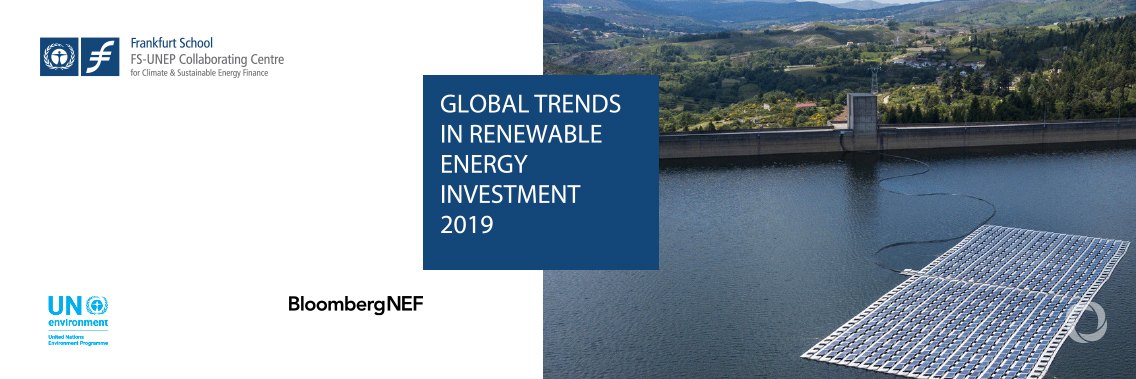Global investment in new renewable energy capacity over this decade — 2010 to 2019 inclusive — is on course to hit USD 2.6 trillion, with more gigawatts of solar power capacity installed than any other generation technology, according to new figures.
According to the Global Trends in Renewable Energy Investment 2019 report, released ahead of the UN Global Climate Action Summit, this investment is set to have roughly quadrupled renewable energy capacity (excluding large hydro) from 414 GW at the end of 2009 to just over 1,650 GW when the decade closes at the end of this year.
Solar power will have drawn half — USD 1.3 trillion — of the USD 2.6 trillion in renewable energy capacity investments made over the decade. Solar alone will have grown from 25 GW at the beginning of 2010 to an expected 663 GW by the close of 2019 — enough to produce all the electricity needed each year by about 100 million average homes in the USA.
The global share of electricity generation accounted for by renewables reached 12.9 percent, in 2018, up from 11.6 percent in 2017. This avoided an estimated 2 billion tonnes of carbon dioxide emissions last year alone — a substantial saving given global power sector emissions of 13.7 billion tonnes in 2018.
Including all major generating technologies (fossil and zero-carbon), the decade is set to see a net 2,366 GW of power capacity installed, with solar accounting for the largest single share (638 GW), coal second (529 GW), and wind and gas in third and fourth places (487 GW and 438 GW respectively).
The cost-competitiveness of renewables has also risen dramatically over the decade. The levelized cost of electricity (a measure that allows comparison of different methods of electricity generation on a consistent basis) is down 81 percent for solar photovoltaics since 2009; that for onshore wind is down 46 percent.
“Investing in renewable energy is investing in a sustainable and profitable future, as the last decade of incredible growth in renewables has shown,” said Inger Andersen, Executive Director of the UN Environment Programme.
The report, released annually since 2007, also continued its traditional look at yearly figures, with global investment in renewables capacity hitting USD 272.9 billion in 2018.
While this was 12 percent down over the previous year, 2018 was the ninth successive year in which capacity investment exceeded USD 200 billion and the fifth successive year above USD 250 billion. It was also was about three times the global investment in coal and gas-fired generation capacity combined.
Overall renewable energy investment, including these categories as well as capacity investment, reached USD 288.3 billion in 2018, down 11 percent on the record figure of USD 325 billion attained in 2017.
China has been by far the biggest investor in renewables capacity over this decade, having committed USD 758 billion between 2010 and the first half of 2019, with the U.S. second on USD 356 billion and Japan third on USD 202 billion.
Europe as a whole invested USD 698 billion in renewables capacity over the same period, with Germany contributing the most at USD 179 billion, and the United Kingdom USD 122 billion.
While China remained the largest single investor in 2018 (at USD 88.5 billion, down 38 percent), renewable energy capacity investment was more spread out across the globe than ever last year, with 29 countries each investing more than USD 1 billion, up from 25 in 2017 and 21 in 2016.
Read and download the Global Trends in Renewable Energy Investment report.
Original source: UN Environment
Published on 05 September 2019

